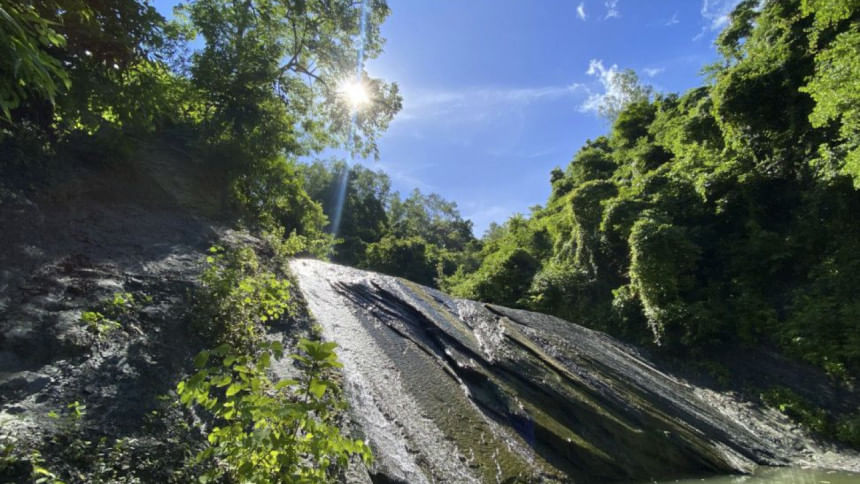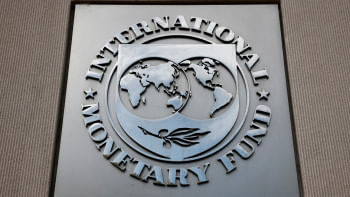Can we transform tourism into a national strength?

Today, the world observes World Tourism Day with the United Nations World Tourism Organization's theme, "Tourism and Sustainable Transformation." For Bangladesh, this is more than a ceremonial event. It is time to ask the question: can we sail confidently into a sustainable tourism future while safeguarding our heritage and empowering our people?
Bangladesh holds treasures admired worldwide. From the mystical Sundarbans to the seemingly endless Cox's Bazar beach, from the tea valleys of Sylhet to vibrant cultural traditions, the country is richly endowed. Yet, while our neighbours thrive on tourism as a significant economic driver, this sector's contribution to our GDP remains modest—only three percent in 2024. By contrast, Thailand generated nearly 8.9 percent of its GDP from tourism in 2024, employing millions. Sri Lanka, despite its economic turmoil, earned $328.3 million in revenue in 2024. Even Nepal, with fewer infrastructural resources, attracted over 1.1 million tourists, relying on trekking, eco-tourism and heritage sites. Clearly, the issue in Bangladesh is not a lack of assets but how those assets are managed.
Our current approach often prioritises numbers over quality. During Eid holidays, the surge of visitors to Cox's Bazar or Srimangal brings congestion, pollution and disappointment. Instead of strengthening our reputation, such unmanaged growth risks damaging it. Consequently, the very resources that attract tourists are strained. This is why sustainable transformation is not optional; it is essential if Bangladesh wishes to remain competitive.
Moreover, sustainability is more than an environmental issue; it is a survival imperative. Bangladesh is among the most climate-vulnerable countries in the world. Rising seas threaten our coasts, while salinity intrudes into the Sundarbans. If we allow unchecked construction, plastic waste and over-tourism, we will accelerate the risks of losing our natural resources. Besides, global travellers are becoming more discerning. Increasingly, they seek eco-friendly destinations and authentic cultural encounters. If Bangladesh fails to adapt, it risks being sidelined in the global tourism market.
The question then becomes: how do we chart a course towards sustainability? At least three directions deserve attention.
First, green tourism development must be prioritised. Eco-resorts powered by renewable energy, hotels with global green certifications and strict conservation measures are essential. St Martin's Island illustrates the urgency; without limits on visitors and bans on single-use plastics, its fragile ecosystem may collapse. Countries like Nepal, which utilise conservation fees from trekking in the Annapurna region to fund both environmental protection and community welfare, offer relevant models.
Second, tourism must become community-centred. The benefits should not flow only to large investors but also to ordinary people. Imagine homestays in the Chittagong Hill Tracts where tourists experience indigenous culture firsthand, or festivals in rural Bangladesh where Baul music and crafts are celebrated. Such initiatives preserve traditions while generating income. Importantly, women and youth can emerge as entrepreneurs in tour guiding, handicrafts and hospitality. Sri Lanka's tea plantation tours and Nepal's village homestay networks show how communities can successfully drive tourism.
Third, Bangladesh must embrace digital and policy transformation. A national tourism app could showcase maps, heritage stories and multilingual booking systems, while cashless transactions and e-tickets would modernise travel. Yet, technology alone is insufficient without policy. Stronger regulations are needed to curb coastal overdevelopment, reduce pollution and manage visitor flows in fragile destinations. Here, Bhutan's "high-value, low-impact" model is instructive: by controlling numbers and emphasising sustainability, Bhutan has positioned itself as a global leader in responsible tourism.
Taken together, these pathways highlight that transformation is not a luxury—it is the only way forward. If appropriately managed, tourism can become a third pillar of the economy, alongside garments and remittances. It can diversify growth, create jobs and strengthen "Brand Bangladesh" internationally. By focusing on sustainability, we can reposition ourselves not as a budget destination, but as a nation renowned for its natural beauty, cultural richness and responsible hospitality.
Ultimately, this year's World Tourism Day is more than a commemoration. It is a mirror held up to us, asking whether we are ready to balance growth with responsibility. If we invest in green practices, empower communities and embrace digital innovation, we can transform tourism into a source of resilience and pride. But if we continue on the current path, we risk losing the very treasures that make Bangladesh extraordinary.
The answer to whether Bangladesh can sail into a sustainable tourism future lies in our collective choices today. Policymakers must create stronger frameworks, businesses must adopt greener models, and communities must be empowered to lead. Above all, we must see tourism beyond recreational purposes. It is a reflection of who we are and the future we want to build. The Sundarbans, Cox's Bazar, and Sylhet, as well as the country's cultural traditions, are our living legacies. If we protect and nurture them, tourism will not only thrive but also transform Bangladesh into a global example of sustainable progress.
Dr Mohammad Shahidul Islam is associate professor of marketing at BRAC Business School in BRAC University. He can be reached at [email protected].
Views expressed in this article are the author's own.
Follow The Daily Star Opinion on Facebook for the latest opinions, commentaries and analyses by experts and professionals. To contribute your article or letter to The Daily Star Opinion, see our guidelines for submission.

 For all latest news, follow The Daily Star's Google News channel.
For all latest news, follow The Daily Star's Google News channel. 










Comments